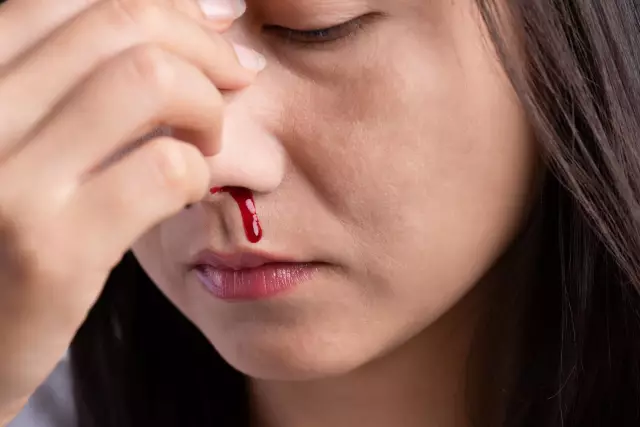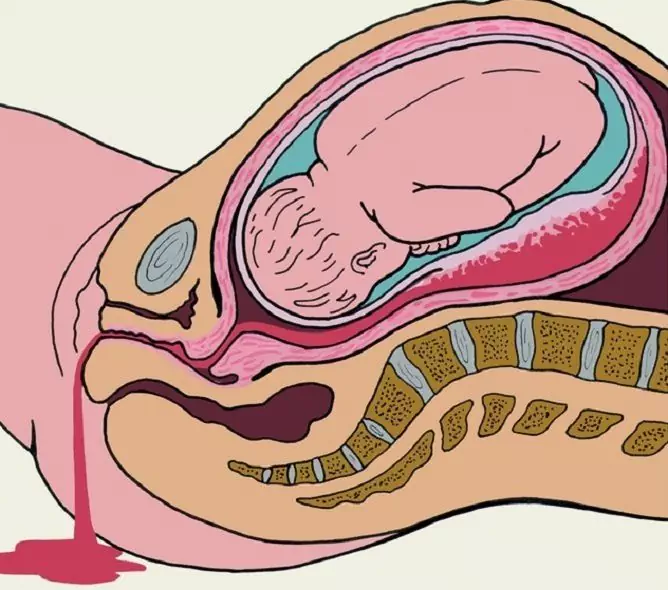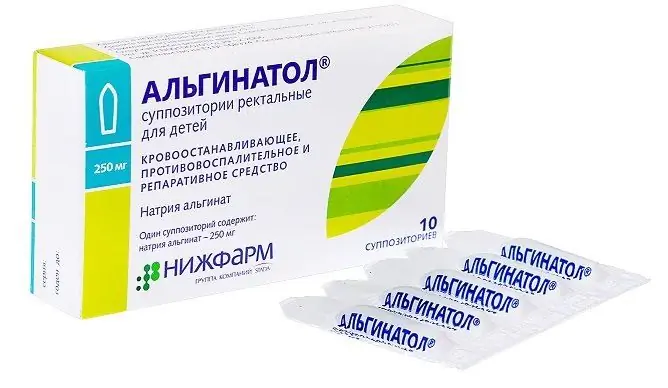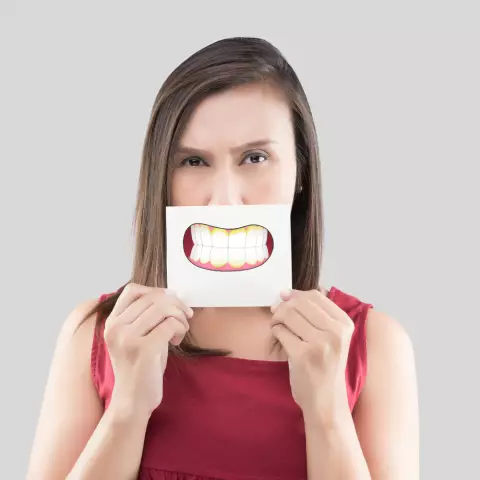- Author Rachel Wainwright [email protected].
- Public 2023-12-15 07:39.
- Last modified 2025-11-02 20:14.
16 causes of bleeding in the eyes
The human eye experiences significant stress on a daily basis. In order for vision to remain sharp for many years, it is necessary that the tissues of the eye are supplied with a sufficient amount of oxygen and nutrients. The task of such a supply is performed by small vessels - capillaries. For the normal functioning of the visual apparatus, it is extremely important that they maintain their integrity, but this does not always happen. Microtrauma of the eye vessels, during which small hemorrhages occur, are extremely common. Sometimes they are triggered by external factors, but regular reddening of the whites of the eyes, or the sclera, may indicate a health problem. In such a situation, you need to be aware of the reasons that cause rupture of the eye capillaries.
Lack of sleep and fatigue
Reddening of the sclera is often the result of a drop in overall vitality as a result of chronic fatigue. If a person consistently lacks sleep, is constantly nervous about professional or domestic troubles, suffers from an excessive sense of responsibility (which is typical of workaholics), then this always affects his appearance, including the color of the whites of his eyes. The sclera takes on an unhealthy pinkish tint caused by microtrauma to the walls of the eye capillaries.
A similar picture is observed in people who regularly overexert their visual apparatus. The whites of the eyes turn red during prolonged reading, watching TV programs or working at a computer, if these activities are not accompanied by the observance of sanitary and hygienic rules (optimal alternation of periods of work and rest, gymnastics for the eyes, etc.).

Source: depositphotos.com
Eye or head injury
In case of severe head injury, it is imperative to visit an ophthalmologist, even if the victim does not notice deterioration in vision. The fact is that with craniocerebral trauma, hemorrhages into the inner tissues of the eyes are possible. In this case, reddening of proteins does not occur, but the consequences can be very serious (up to retinal detachment and complete loss of vision).
Quite often, injuries to the eye apparatus itself occur - due to the ingress of small solid particles (dust, grains of sand), chemical or thermal burns, etc. Violation of the integrity of the capillaries in such a situation cannot be avoided. If the damage is small, the discomfort may quickly disappear, but it is still better if the affected eye is examined by a specialist.

Source: depositphotos.com
Physical overstrain
The eye capillaries are very sensitive to physical exertion. Vascular ruptures occur in athletes who are too keen on strength training. Also, the risk group includes people who are predominantly engaged in sedentary work and are poorly adapted to physical labor: they may have hemorrhages in the sclera even with a sharp tilt of the body or an attempt to lift a relatively light load.
In women, eye capillaries are often injured during childbirth due to enormous physical and nervous stress. The causes of reddening of the whites of the eyes in a young child are similar when he cries for a very long time and loudly.

Source: depositphotos.com
Diabetes
Impaired glucose metabolism negatively affects the elasticity of the vascular walls. In diabetics, all capillaries are affected, including the eye. The defeat is accompanied by a gradual decrease in visual acuity.
Regular reddening of the whites of the eyes, which is observed simultaneously with constant thirst, weight gain, increased urination, and itchy skin is a very dangerous situation. It is necessary to visit an endocrinologist and undergo a full examination, it is imperative to donate blood for sugar.

Source: depositphotos.com
Hypertonic disease
In people with arterial hypertension, peripheral vessels may not withstand the increased blood pressure and burst. In this case, nosebleeds and (or) intraocular hemorrhage occur.
On the one hand, such an event can be considered good luck: a cerebral hemorrhage would be much more dangerous. On the other hand, damage to the eye capillaries in hypertension indicates that the patient has problems regarding the condition of the vascular walls. This increases the risk of developing a stroke, because such a patient needs constant medical supervision.

Source: depositphotos.com
Infectious diseases
Minor hemorrhages in the eyes may appear during ARVI. The provoking factors are high fever, cough, sneezing, increased lacrimation.
Reddening of proteins is associated with ailments such as tuberculosis or typhoid. In patients suffering from certain sexually transmitted diseases (gonorrhea, syphilis), the outflow of fluid from the eyes is impaired, which can also cause microtrauma of the capillary walls and reddening of proteins.

Source: depositphotos.com
Eye diseases
With eye diseases, hemorrhages in the sclera or surrounding tissues occur very often. The list of such ailments is long. The most common are:
- infectious and inflammatory lesions (keratitis, blepharitis, conjunctivitis, uveitis, etc.);
- acute glaucoma;
- neoplasms of eye tissue.
In any particular case, a whole complex of symptoms is observed, each of which must be analyzed by an ophthalmologist to make an accurate diagnosis.

Source: depositphotos.com
Sjogren's syndrome
This is a severe autoimmune systemic damage to the connective tissue, accompanied by a decrease in the function of the lacrimal glands. In patients with this disease, almost no tears are produced. They develop dry eye syndrome, which causes fragility of the eye capillaries.

Source: depositphotos.com
Vascular disorders
The following ailments associated with damage to the walls of blood vessels can be named: hemorrhagic vasculitis, Takayasu's disease, Wegener's granulomatosis, Behcet's syndrome, temporal arteritis. Patients develop fragility of the capillary walls and regular microscopic hemorrhages, including on the surface of the whites of the eyes.

Source: depositphotos.com
High intracranial pressure
The cause of increased intracranial pressure can be brain neoplasms, congenital abnormalities of the bones of the skull, neurocirculatory dystonia and some other diseases. With high intracranial pressure, the eye capillaries often do not withstand the pressure of blood and burst, which can look both like reddening of proteins and like areas of hemorrhage in the eyes.

Source: depositphotos.com
Blood diseases
If hemorrhages in the eye tissue occur simultaneously with the frequent appearance of hematomas, hemorrhagic rash, minor skin lesions or increased bleeding of the gums, then this may indicate a violation of blood clotting. The situation requires an immediate examination of the person in order to start treatment as soon as possible.

Source: depositphotos.com
Avitaminosis
Violation of the elasticity of the walls of the capillaries arises, among other things, due to a deficiency of certain vitamins and trace elements in the body. Similar causes sometimes underlie disorders of blood clotting factors.
With frequent hemorrhages in the eye tissue, it is likely that the patient has hypovitaminosis A or C, as well as a lack of routine.

Source: depositphotos.com
Allergy
Some ophthalmic diseases (for example, keratitis) can be not only infectious, but also allergic. In addition, for many allergy sufferers, damage to the eye capillaries occurs when sneezing and increased lacrimation caused by a painful reaction of the body to a foreign agent.

Source: depositphotos.com
Overheating of the body
People tolerate high temperatures in different ways. For some, overheating of the body on the beach or when visiting a steam room in a bathhouse causes a sharp flow of blood to the peripheral vessels. If this does not lead to serious changes in blood pressure, there is no health hazard. However, hemorrhages in the eye tissue may indicate that there are still problems with blood vessels. In this case, you should refrain from hot procedures and see a doctor.

Source: depositphotos.com
Taking medication
Hemorrhages in the eye tissue can occur as a result of taking medicines designed to thin the blood. They are usually prescribed to patients suffering from thrombophlebitis, varicose veins, arterial hypertension.
In case of redness of the eyes while taking such drugs, it is important to consult a doctor in time. Probably, the patient needs a temporary withdrawal or replacement of the prescribed drug.

Source: depositphotos.com
Alcohol abuse
Drinking alcohol provokes a sharp expansion and narrowing of blood vessels. This can cause not only a headache, but also damage to the walls of the eye capillaries.

Source: depositphotos.com
The causes of hemorrhage in the eye tissue are too complex and varied. In any case, when they appear, it is better to consult a specialist. If such phenomena occur repeatedly, it is necessary to undergo a full examination in order to be able to establish an accurate diagnosis.
YouTube video related to the article:

Maria Kulkes Medical journalist About the author
Education: First Moscow State Medical University named after I. M. Sechenov, specialty "General Medicine".
Found a mistake in the text? Select it and press Ctrl + Enter.






